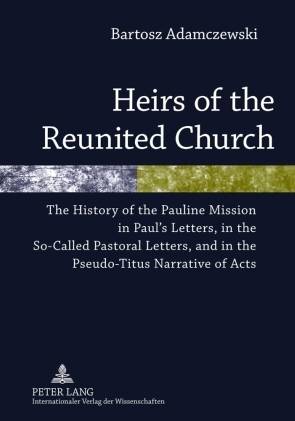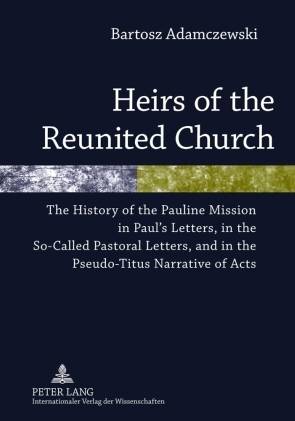
- Afhalen na 1 uur in een winkel met voorraad
- Gratis thuislevering in België vanaf € 30
- Ruim aanbod met 7 miljoen producten
- Afhalen na 1 uur in een winkel met voorraad
- Gratis thuislevering in België vanaf € 30
- Ruim aanbod met 7 miljoen producten
Zoeken
Heirs of the Reunited Church
The History of the Pauline Mission in Paul's Letters, in the So-Called Pastoral Letters, and in the Pseudo-Titus Narrative of Acts
Bartosz Adamczewski
Hardcover | Engels
€ 72,95
+ 145 punten
Omschrijving
The work establishes the relative and absolute chronology of Paul's life. It demonstrates that Paul went to Jerusalem only two times after his conversion. The second visit, which was planned in Rom and described retrospectively in Gal, ended up with the Antiochene conflict. The following Eucharistic schism within early Christianity has lasted for at least a century after Paul's death in AD 49. The so-called Pastoral Letters, which are in fact ethopoeic, confirm this state of matters. The history of the Pauline mission, as it was described in the Acts of the Apostles, is a result of sixfold hypertextual reworking of Gal 1:17-2:14; Rom 15:25-32 with the use of other Pauline and post-Pauline texts. Luke irenically described the history of early Christianity as a history of the reunited Church.
Specificaties
Betrokkenen
- Auteur(s):
- Uitgeverij:
Inhoud
- Aantal bladzijden:
- 178
- Taal:
- Engels
Eigenschappen
- Productcode (EAN):
- 9783631605042
- Verschijningsdatum:
- 9/08/2010
- Uitvoering:
- Hardcover
- Formaat:
- Genaaid
- Afmetingen:
- 148 mm x 210 mm
- Gewicht:
- 329 g

Alleen bij Standaard Boekhandel
+ 145 punten op je klantenkaart van Standaard Boekhandel
Beoordelingen
We publiceren alleen reviews die voldoen aan de voorwaarden voor reviews. Bekijk onze voorwaarden voor reviews.











